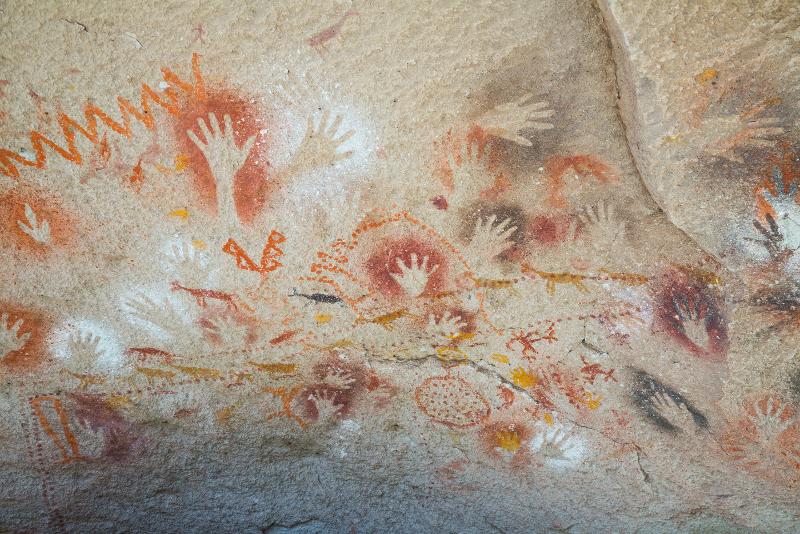Welcome to a captivating journey into the world of art preservation and historical understanding. In this article, we delve into the groundbreaking techniques of Raman spectroscopy, as senior postdoctoral researcher Anastasia Rousaki and her team at Ghent University utilize mobile non-invasive methods to analyze the composition of art from various historical periods. From prehistoric cave paintings in Patagonia to 19th to 20th century Greek paintings and 21st-century murals in Parma, join us as we uncover the secrets hidden within these masterpieces.
Unraveling the Palette of Prehistoric Cave Paintings
Explore the fascinating world of prehistoric cave paintings in Patagonia and discover how Raman spectroscopy unveils the secrets of the ancient palette.
Step back in time and immerse yourself in the captivating world of prehistoric cave paintings. Anastasia Rousaki and her team embarked on a mission to analyze the composition of these ancient murals using mobile non-invasive Raman spectroscopy. By examining the pigments used by the hunter-gatherer communities, they gained valuable insights into the palette of the time.
The dual Raman laser system revealed that typical pigments were used, shedding light on the artistic choices made by our ancestors. This knowledge not only enhances our understanding of prehistoric art but also aids in the preservation of these invaluable cultural treasures.
Unveiling the Secrets of Greek Painters: The Munich School
Journey into the world of 19th to early 20th century Greek paintings and witness how Raman spectroscopy uncovers the hidden pigments and challenges faced by artists of the Munich School.
Travel to Athens, the birthplace of Greek art, and delve into the works of the Munich School. With the aid of 2D Raman mapping technology, Rousaki's team analyzed the pigments used by renowned Greek painters of the late 19th to early 20th century.
At the National Gallery in Athens, they meticulously examined paintings such as Nikiforos Lytras' "Antigone and Polyneices." Despite the challenges posed by degraded varnish layers, the team successfully identified the pigments used in various zones of the artwork.
By comparing the pigments in paintings by Andreas Kriezis and Francesco Pige, the team shed light on the artistic choices and techniques employed by these influential artists. Their findings contribute to a deeper understanding of the Munich School and its impact on Greek art history.
Analyzing the Evolution of Street Art: Parma's 21st Century Murals
Embark on a journey to Parma and witness how Raman spectroscopy unveils the degradation pathways and composition of 21st-century murals, providing insights into the evolving world of street art.
Immerse yourself in the vibrant streets of Parma, where 21st-century murals adorn the walls. Rousaki's team utilized a fiber optic system to analyze these modern artworks, uncovering the degradation pathways that impact street art.
Through their analysis, they gained valuable insights into the composition of the murals, shedding light on the materials and techniques used by contemporary street artists. This knowledge not only enhances our appreciation for this dynamic art form but also aids in the preservation and conservation of these urban masterpieces.
Conclusion
Raman spectroscopy has revolutionized the field of art analysis, allowing us to delve deeper into the composition of various artworks from different historical periods. Through the use of mobile non-invasive techniques, Anastasia Rousaki and her team at Ghent University have provided invaluable insights into the palette of prehistoric cave paintings, the pigments used by Greek painters of the Munich School, and the composition of 21st-century murals in Parma.
By uncovering these secrets, we not only gain a better understanding of our artistic heritage but also contribute to the preservation and conservation of these cultural treasures. Raman spectroscopy continues to be a powerful tool in the world of art preservation and historical understanding, opening up new avenues for research and appreciation.

